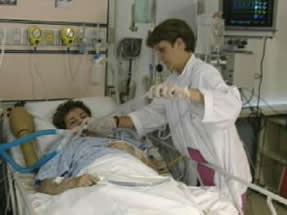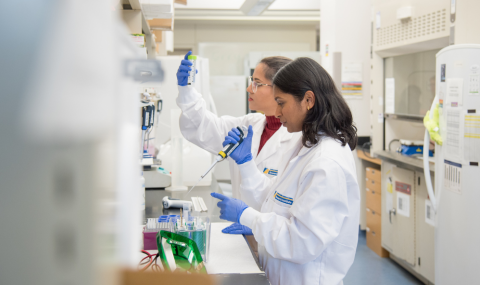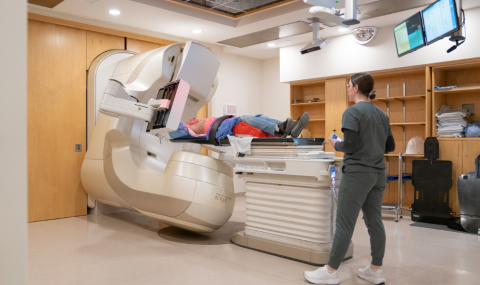Suctioning is a procedure that is done to help keep a patient's airway open and free of mucous. Mucous is also called "secretions". When a patient has a breathing tube in place, he or she will require intermittent suctioning. The frequency will depend on the quantity and thickness of the secretions.
During suctioning, a small catheter or tube is inserted into the breathing tube. The suction (or vacuum) is applied to the catheter as the tube is removed. The catheter is connected to the breathing tube and contained within a sterile plastic bag. This allows us to quickly suction a patient, without interrupting the breathing machine. Often, the patient will cough during the procedure. This actually helps to bring more of the secretions forward.
Suctioning is uncomfortable but it only lasts a few seconds. The patient may feel like his or her breath is being taken away. The ventilator will often alarm during suctioning. The procedure may make the patient cough and turn red in the face. After the tube has been cleaned out, the patient will usually find it easier to breathe. It may take the patient a few minutes to settle after suctioning. We may need to give the patient a medication to relax their breathing.
Suctioning is sometimes done when the patient does not have a breathing tube. If a patient has a lot of secretions and cannot cough them forward, we may need to suction the secretions by inserting a suction catheter into the nose or mouth. A small rubber tube called a "nasal trumpet" may be left inside one side of the nose to make it easier to slide the suction catheter into the airway and to reduce the irritation caused by inserting the catheter.




